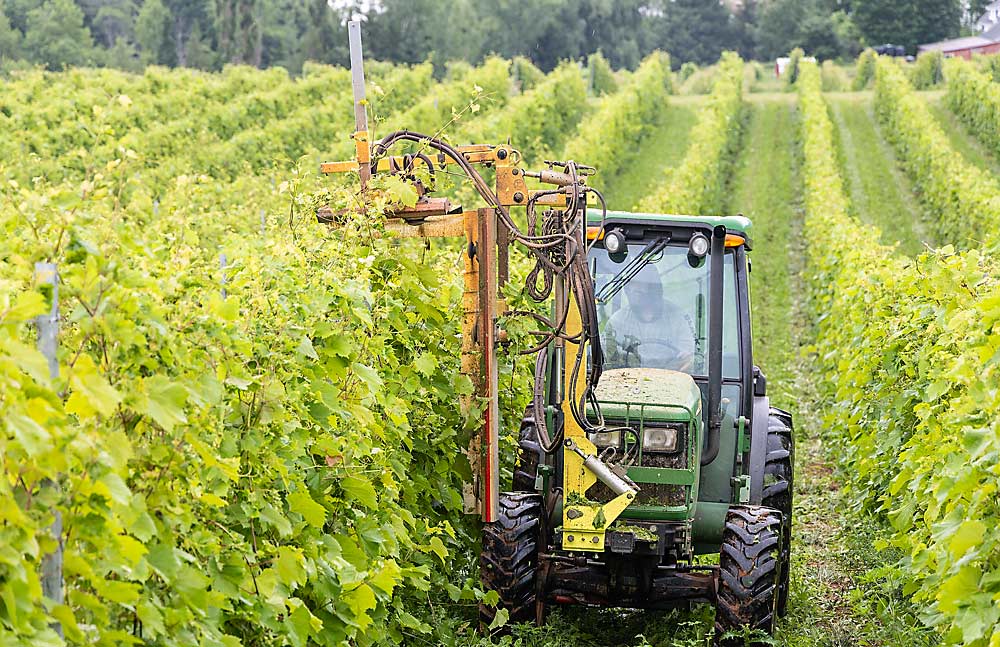
With its rich soils, gentle slopes and temperatures restrained by the Atlantic Ocean, Nova Scotia’s grape-growing potential seems almost unlimited. But like fruit growers everywhere, Nova Scotia vineyardists must determine how best to adapt to an increasingly unpredictable climate so they can keep producing consistent crops.
The past year has seen some particularly turbulent weather patterns in the Canadian province. An unseasonably warm December and January followed by a freeze in February wiped out virtually all of the Vitis vinifera crop. Hybrid varieties fared better, but they don’t command the same prices vinifera varieties — the traditional European cultivars — do. It was probably the worst freeze event in the history of Nova Scotia’s grape industry, said Harrison Wright, a research scientist with Agriculture and Agri-Food Canada.
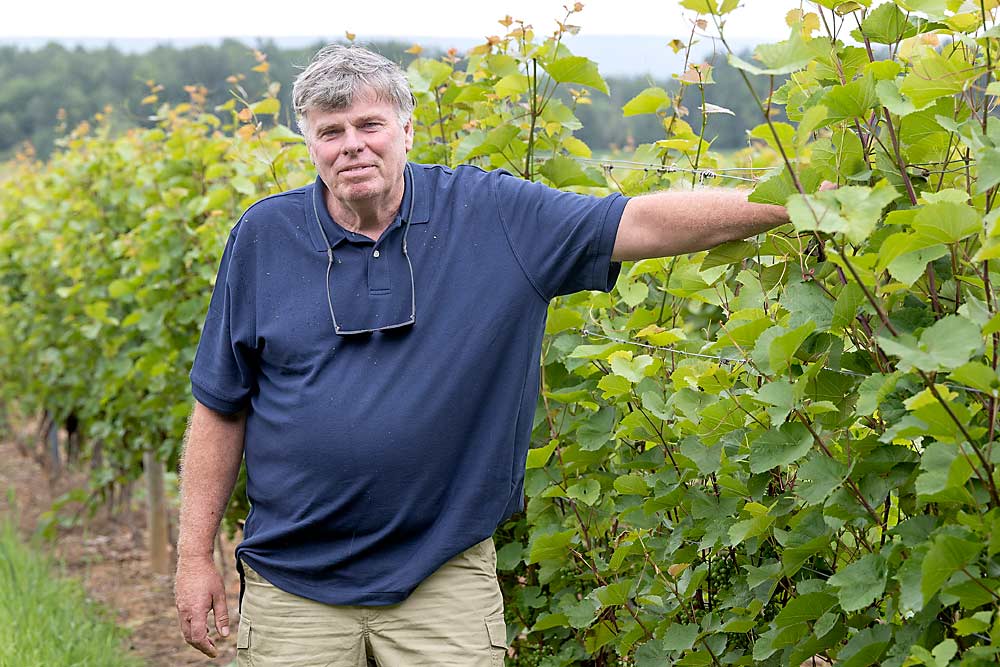
In his more than 30 years of growing grapes, John Warner had never seen his vines go through such a “shock,” but he was relieved to see them recover.
“I’ve never seen so much bud damage,” he said in July. “I was anticipating more vine fatalities, but I was pleasantly surprised to see how everything popped back.”
Grower Steve Ells lost all his vinifera grapes, but the vines survived and he was expecting “modest production” from those vinifera in 2024, he said. Of course, he still had to spray, tuck, prune and mow his Chardonnay, Pinot Noir and other vinifera blocks this year, even though they wouldn’t yield a crop.
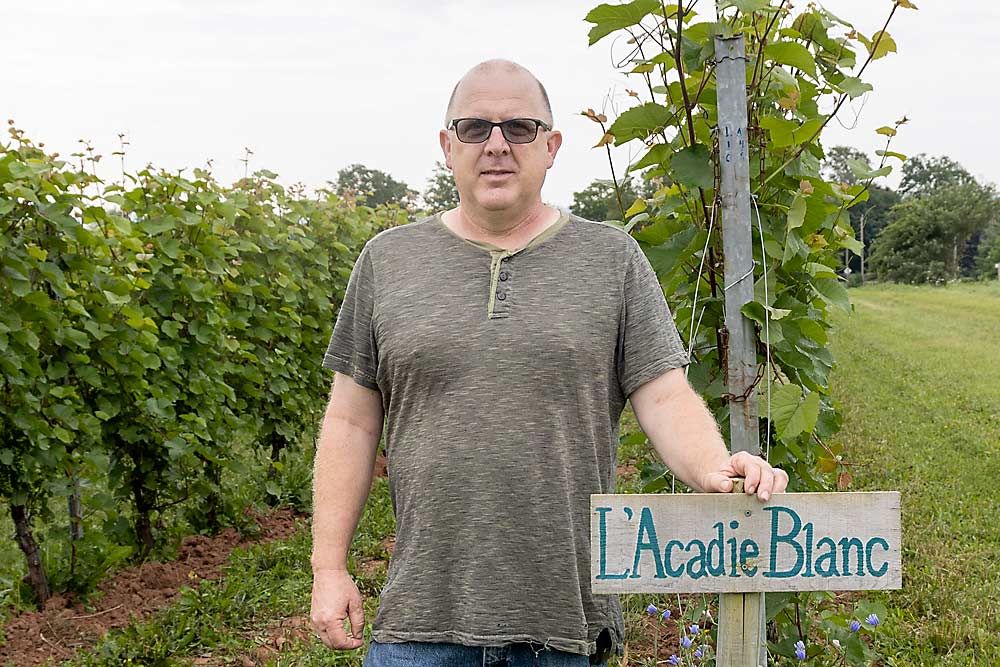
The climatic extremes didn’t end in February. Nova Scotia had one of its driest springs on record, followed by a deluge of rain in June and historic floods in July. Unusually heavy rains continued through September.
Even the wind isn’t as reliable as it used to be. Lightfoot & Wolfville Vineyards could always rely on breezes from the nearby Bay of Fundy to dry out vine canopies. The breezes are nearly constant — or were until recently.
“Lately, it’s been a little weird,” co-owner Rachel Lightfoot said. “There are more still days. It’s been climate chaos basically all year.”
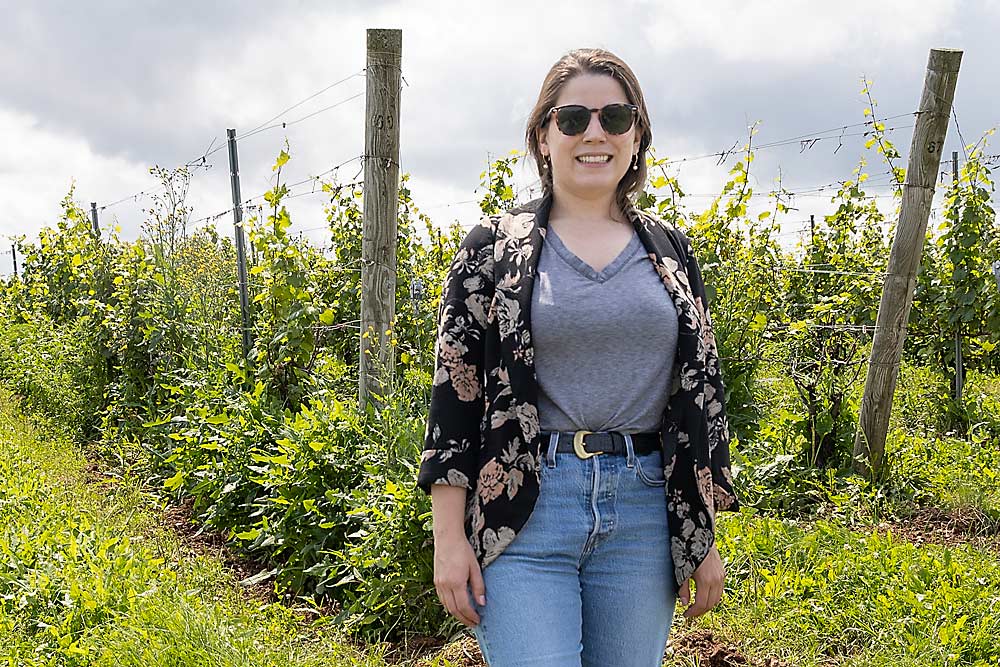
Fast growth
Nova Scotia’s wine grape industry is relatively young, with just a few decades of production, but it has expanded significantly in recent years. There are about 1,200 acres of wine grapes, with 300 more coming into production. Most of the vineyards are concentrated in the Annapolis and Gaspereau valleys in the western part of the province. About two-thirds of the grapes are cold-hardy varieties and other hybrids, the remaining third vinifera varieties. The vast majority of vines are trained to a vertical shoot positioning system, Ells said.
As a grower, vineyard manager and president of the Grape Growers’ Association of Nova Scotia, Ells has a broad view of the industry’s potential. He said there are 20,000 acres in the region capable of growing wine grapes.
“Our falls are usually fantastic for grapes,” Ells said. “The warm days and cool nights cause grapes to retain acidity, but also build flavors.”
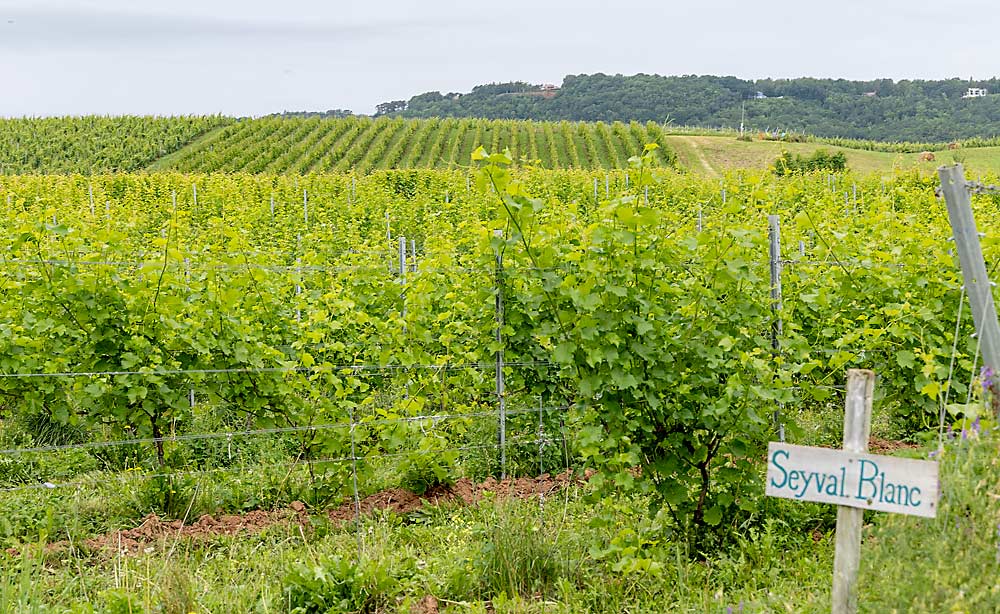
When Good Fruit Grower toured Nova Scotia vineyards in July, Ells and other growers said the reputation of Nova Scotia wines has gone up considerably in recent years, especially for its sparkling and ice wines. Trained winemakers and viticulturists have flocked to the province as its reputation has grown.
Ells, a former truck driver, planted his first vines in 2012. With 55 acres, he’s now one of the largest grape growers in the province. He’s also vineyard manager at Benjamin Bridge winery, a tourist destination known for its sparkling wine.
The Nova Scotia grape industry doubled in acreage in the past decade or so, but with that rapid expansion came some “poor quality” nursery stock and varieties that didn’t match well with their sites, Ells said. Growers are fussier about clean material these days and are learning which varieties grow best on certain sites.
“You’re fighting a losing battle if you’re growing grapes in the wrong location,” grower John Warner said.
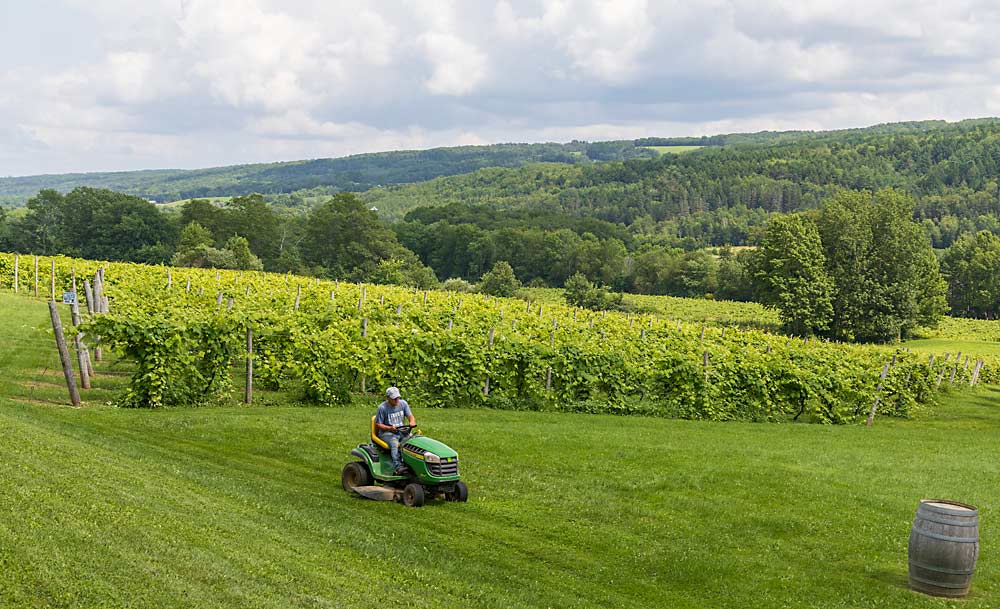
With 80 acres, Warner is the largest grape grower in Nova Scotia. And with 32 years under his belt, he’s one of the most experienced. He sells his grapes to four local wineries. The vast majority of Nova Scotia grapes go to Nova Scotia wineries, which sell most of their wine during the summer and fall tourism seasons. The coronavirus pandemic slowed down tourism for a couple of years, but things appear to be getting back to normal, he said.
Warner and Ells both recruit seasonal foreign workers through Canada’s Seasonal Agricultural Worker Program. Ells said smaller growers tend to hire local labor.
Nova Scotia growers have more than 50 varieties in the ground right now, but that number will probably shrink as they dial in their wine styles and economize their management practices, Ells said.
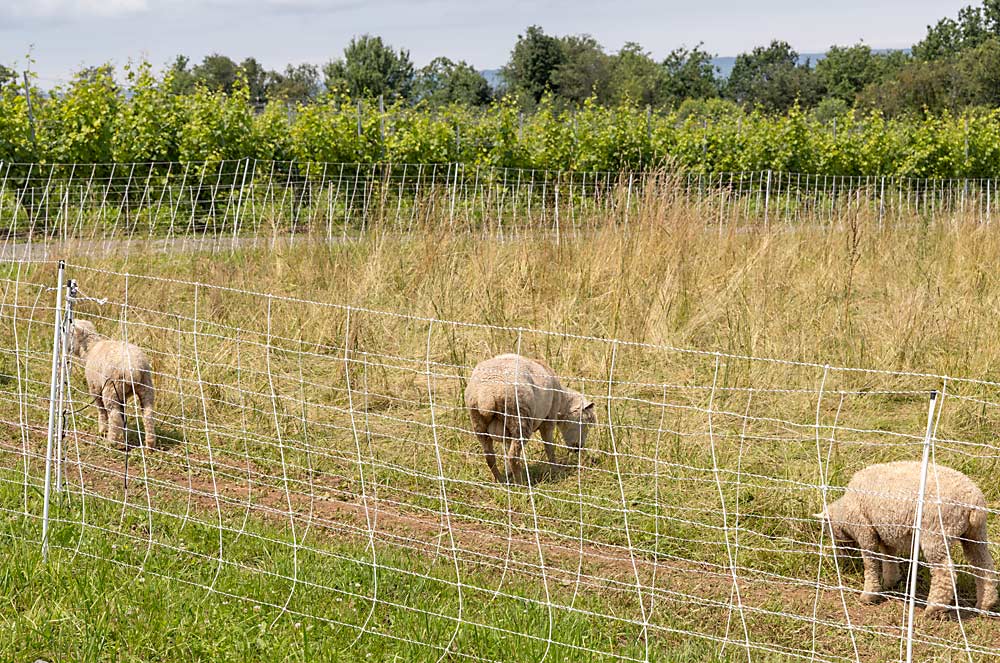
The most planted grape is L’Acadie Blanc, a hybrid white variety, developed in Ontario, that “beautifully matched” Nova Scotia’s shorter, cooler growing season. Nova Scotia growers have planted probably 400 acres of L’Acadie Blanc in the past 10 years, and it’s a major component in the province’s signature Tidal Bay blend, Ells said.
“I don’t want to call L’Acadie Blanc a workhorse, because you can make some really delicate, beautiful wines with it,” said Josh Horton, head grower and winemaker at Lightfoot & Wolfville Vineyards. “But it’s a workhorse in the sense that it doesn’t matter if it’s a frost, a polar vortex, a lot of rain or wind — it just pushes through, and you always end up with pretty good quality.”
Changing climate
In the aftermath of the February freeze, the question of what to plant in the near future loomed over Nova Scotia’s grape growers. Should they take the opportunity to pull out damaged vinifera vines and replace them with the same varieties on better rootstocks, or should they replace them with hardier hybrids?
In July, Ells pulled out a Chardonnay block damaged by the freeze, and he planned to replace it with a different variety. It was one of the first blocks he planted, and “we didn’t do a great job,” he said. The Chardonnay vines were never fully healthy.
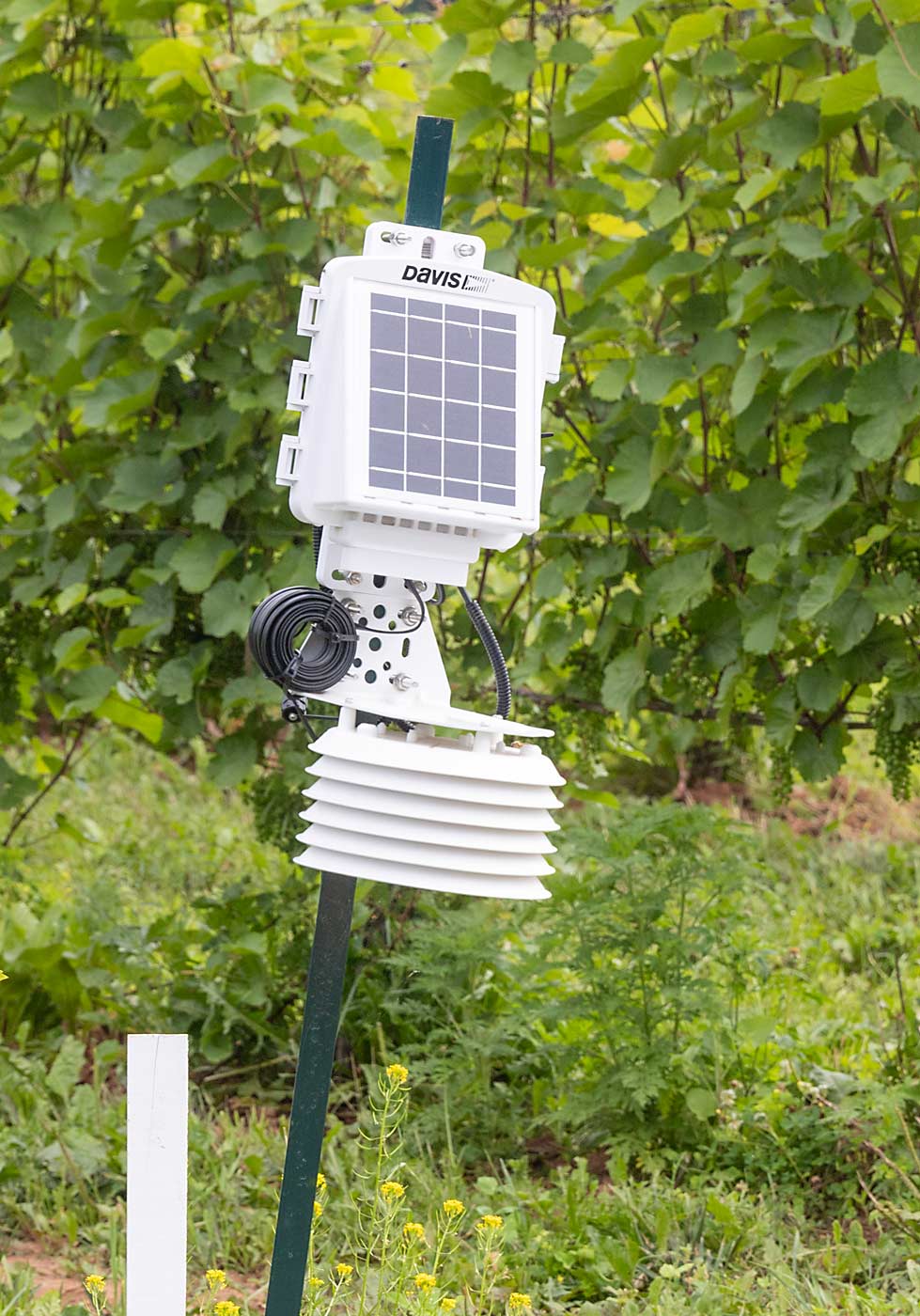
The changing climate is testing Nova Scotia growers in different ways. Thirty years ago, they worried about early October frosts. But frosts arrive in early November these days, extending the season and allowing growers to plant more cold-sensitive varieties, Warner said.
But now that they’ve seen the damage an unseasonably warm fall followed by a deep freeze can do, the province’s growers recognize the need for “really deep hardiness” in their grapevines, said Jeff Franklin, a technician in the plant physiology program at the Agriculture and Agri-Food Canada research center in Kentville.
Franklin is part of a team studying nutritional and viticultural factors that might contribute to cold-hardiness, and he is trialing cold-hardy varieties. He called Marquette, bred by the University of Minnesota, an “almost perfect cultivar” for Nova Scotia but said it tends to ripen a little late and is sensitive to phylloxera. He’s testing Marquette — typically grown on its own roots — on different rootstocks to see if that might fix its problems.
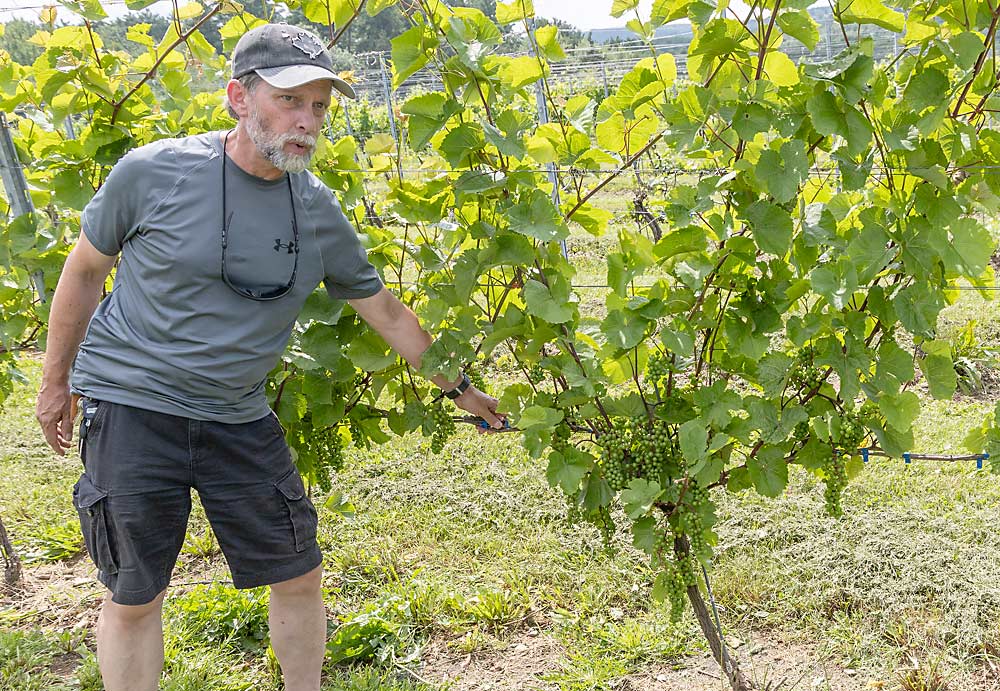
Heavy precipitation has always been a challenge in Nova Scotia, creating a climate conducive to downy mildew. Frequent rains result in short spray windows, made even shorter by Canada’s strict re-entry intervals for spray materials, Warner said.
The weather may be less predictable than it used to be, but it’s forcing growers to become better, Horton said.
“We’re going to have to look at new techniques and materials to try to protect our vines,” he said. “We don’t know what we’re going to get handed.”
—by Matt Milkovich

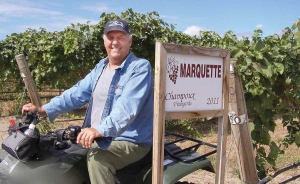





Leave A Comment